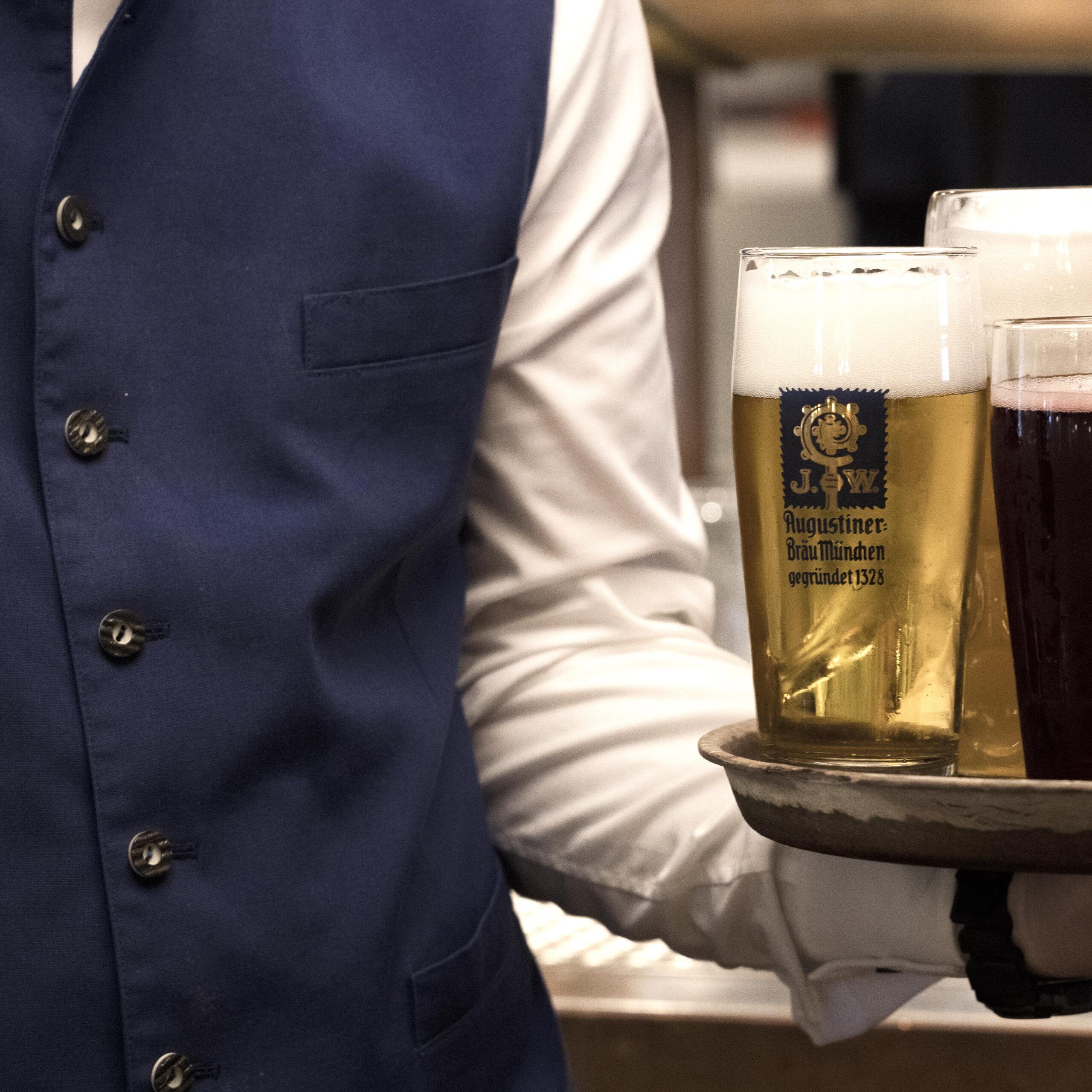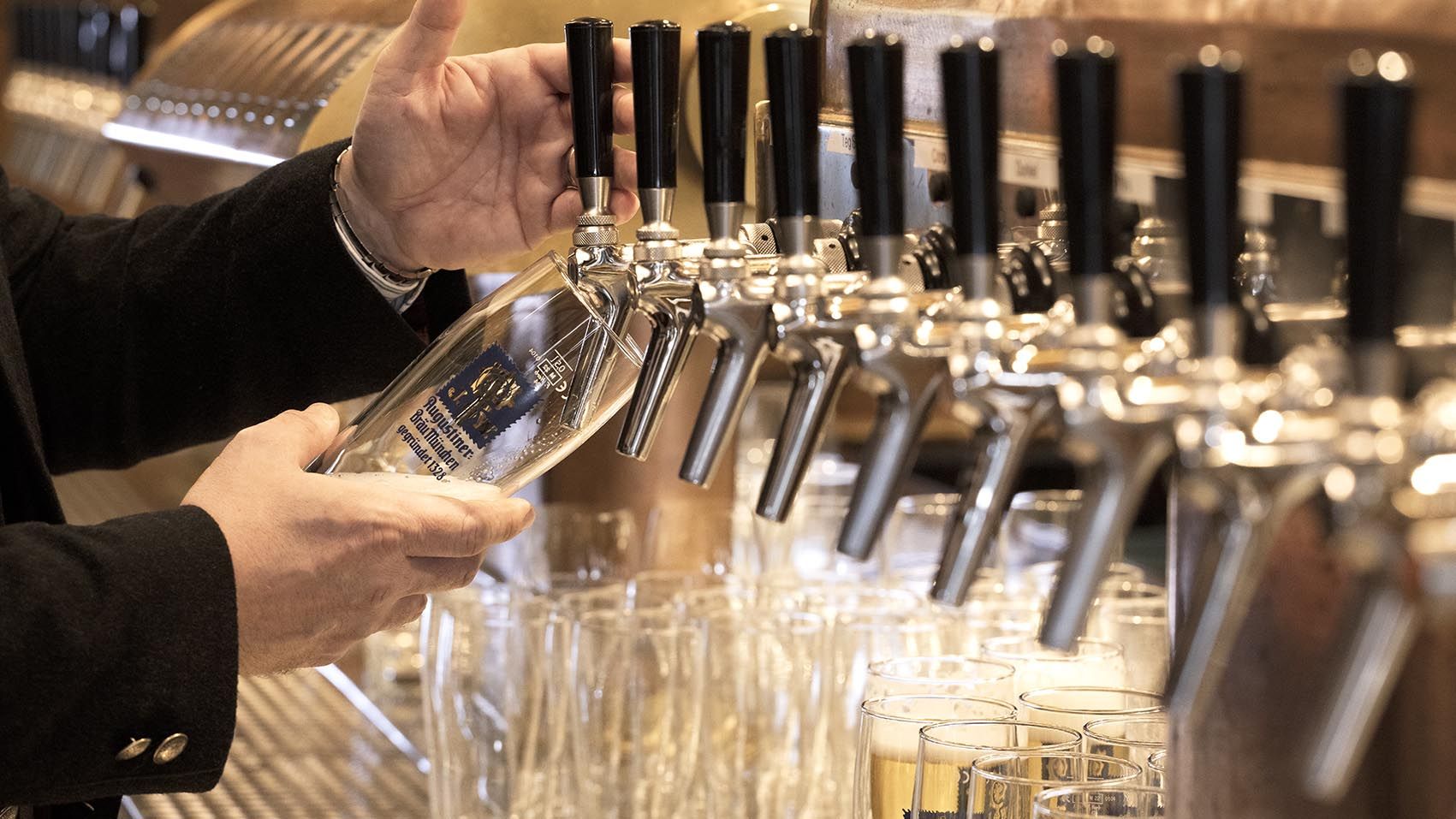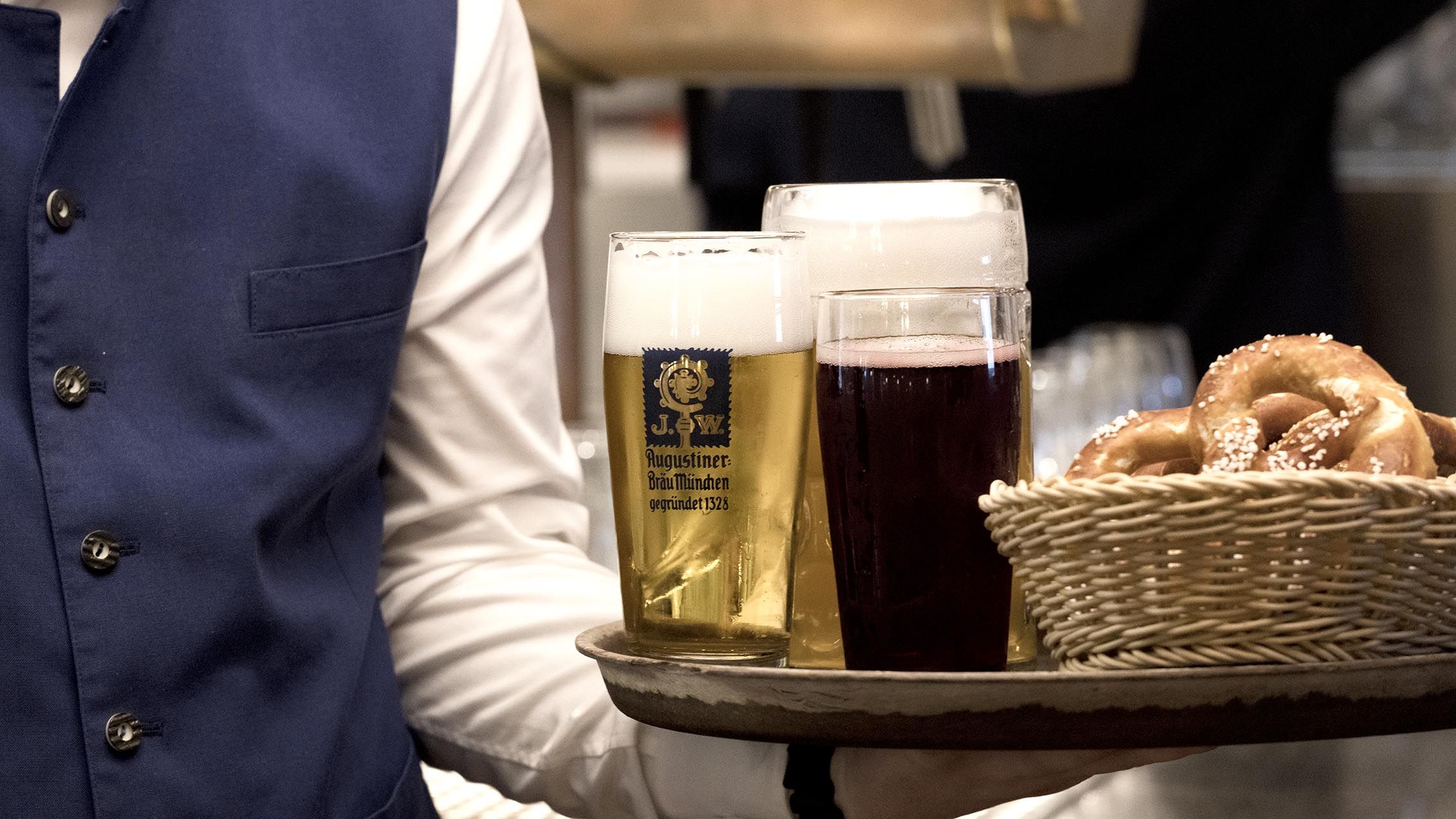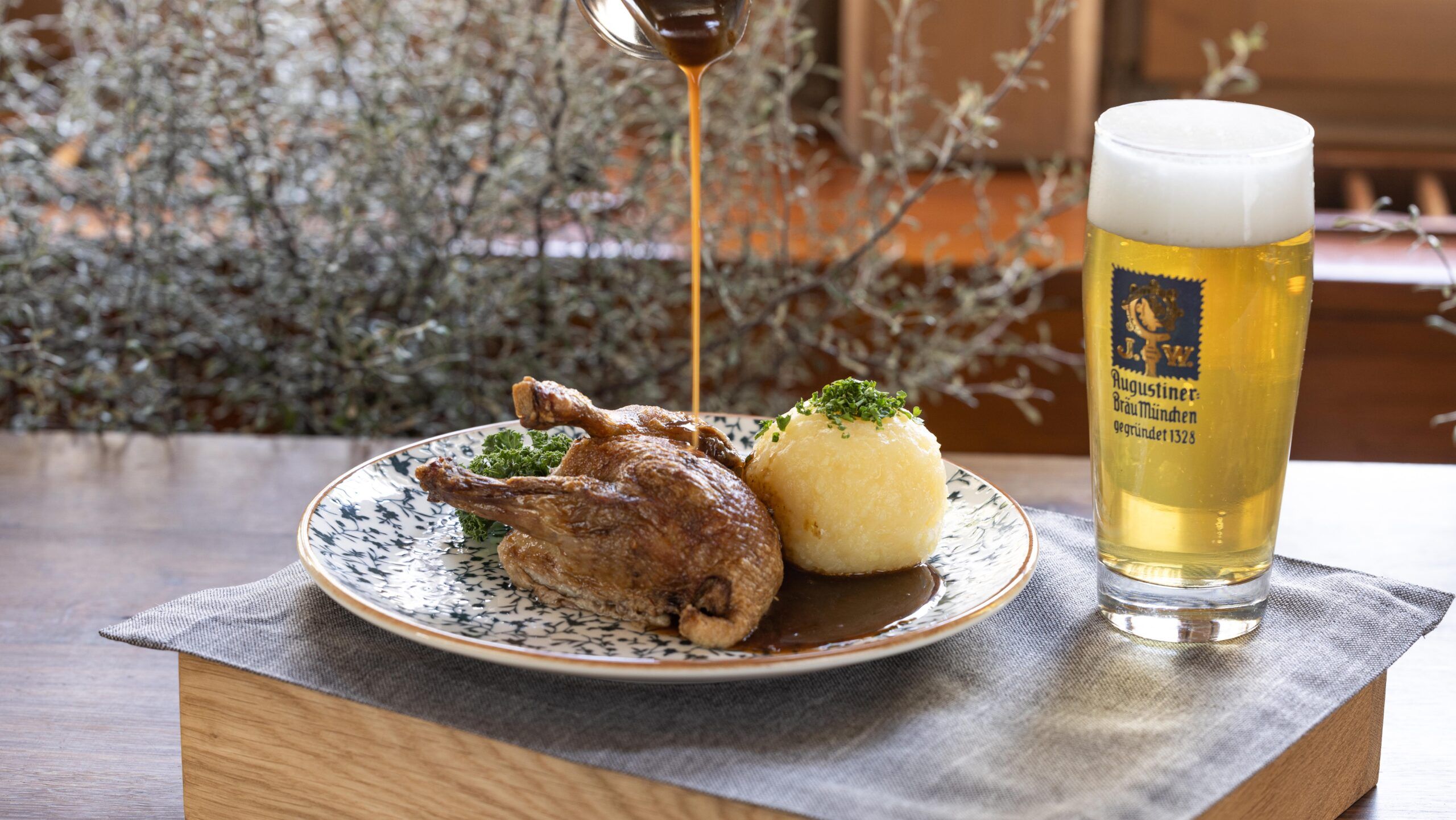
Little Beer Stories
We serve beers of the most traditional breweries in Munich:
Augustiner Bräu, Herzogliches Brauhaus Tegernsee und Schlossbrauerei König Ludwig.
And what in in our beers? What does they taste? Please read our Beer ABC in short:
B as in Brewing Water
The brewing water gives every beer its own personality. Its quality requirements are higher than those of drinking water. As diverse as the regional, extremely pure natural water sources in Bavaria are in their composition, as diverse are the beers brewed with it.
H as in hops and M as in malt
These are the components that give beer its character. They give the taste and the scent of flowers to the beer. Depending on the type of malt, the aroma can vary from light to distinctive. The brew master uses the balanced bitterness of the hops to compose a counterbalance to the sweetness of the malt. The hops aroma also can vary from light to distinctive.
O as in Original Wort
The gravity of the wort before fermentation contains of the percentage of maltose as well as the extraction of valuable substances from malt and hops. The biggest part of this will be fermented to alcohol and carbonic acid. The alcohol percentage of the beer is approx. 40% of the original wort extract (except for nonalcoholic beer). The non fermented rest of the wort gives the beer the fine or more distinctive aroma.
Y as in yeast
Yeast ferments the maltose into alcohol and carbonic acid. Top fermenting yeast will rise to the surface during fermentation whereas bottom fermenting yeast will sink to the bottom of the tank. Top fermented beers are more fruity in the palate. When, after fermentation, this beer is not filtered, a distinctive cloudiness will remain in the beer. This can vary from „opalescent“ to „strong“.
Carbonic acid developes during fermentation and maturation of the beer. Under counterpressure it is bonded in the beer and provides for the sparkling fresh taste.
Source: Bayerischer Brauerbund e.V., München



